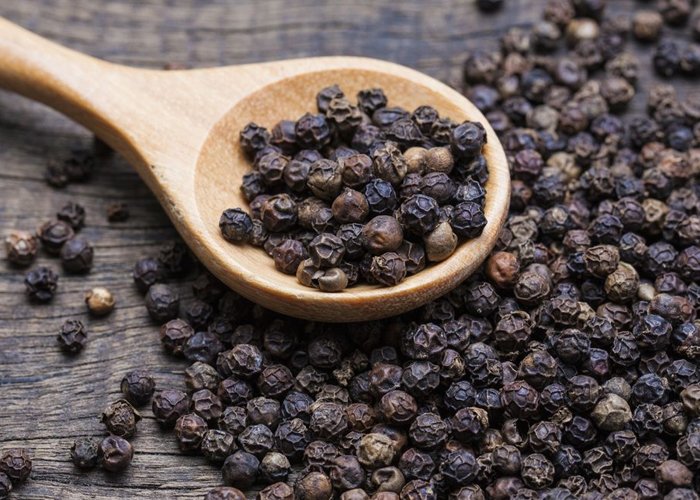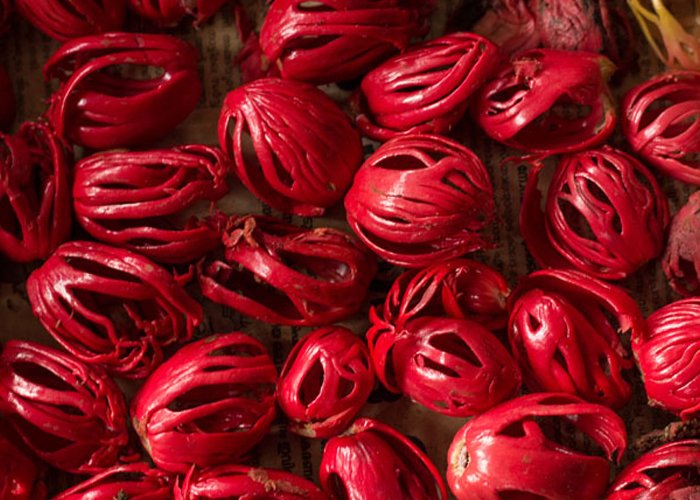Spices
- Home
- Spices
Spices
Herbs and spices have been a major influence on Eastern cuisine since times immemorial. Spices heighten the flavor and aroma of a dish. Currently, herbs and spices are valued beyond their rudimentary flavoring applications and see continued demand for various medicinal purposes. As the name ‘Spice Island’ implies, Sri Lanka is no stranger to the world of herbs and spices. It is no exaggeration to state that spices have influenced the cuisine and the taste buds of the local communities with their rich flavor profiles and aromatic properties. The ‘Spice Island’ came to be as a result of Sri Lanka’s climatic conditions allowing for a variety of spices to be grown on the Island’s soils. The abundance of these culinary treasures attracted the attention of many western nations throughout history who wished to source from Sri Lanka’s spice market.
Ceylon cinnamon is known as ‘true cinnamon and ‘pure cinnamon’. It is obtained from the bark of Cinnamonum zealanicum, which is an evergreen plant native to Sri Lanka (Ceylon). 90% of world production of true cinnamon originates from Sri Lanka. The unique method of processing and curing of cinnamon entices the characteristic flavor of cinnamon production of other countries, such as Cassia cinnamon.
Countries in North and South America, together with other European countries, are the major importers of Ceylon cinnamon. Because of its aromatic nature, cinnamon is used mainly by Mexicans in making coffee. Similarly, it is used in flavoring other drinks and foods.
Pepper, commonly called the “King of spices”, has dominated the international spice market for ages. Even though most peppers originated from the South of India, a variety of wild pepper is native to Sri Lanka (formerly Ceylon). Pepper comes from an evergreen climbing tree called Piper nigrum. The woody shrub belongs to the family Piperaceae.
Supported by a network of aerial roots, the Pepper shrub grows to a height of about 10m. However, a height of 4m is maintained by pruning. Flowers produced are densely spiked. Peppercorns are also produced from fruits that resemble berries. These contain single seeds.
Ceylon pepper is important in the world spice market due to its high piperine content, strong aroma, and rich flavor. Pepper has two varieties named ‘white pepper’ and ‘black pepper’.
Although the time and manner of introduction of cloves into Sri Lanka are not known, it is speculated that the Arabs or colonialists brought the crop to the island, since Sri Lanka was a major market for spices.
Cloves are the unopened flower buds of a tree in the Myrtaceae family. The evergreen tree is called Eugenia caryophyllus. The clove tree is of medium size and has a smooth bark. By distilling the flower buds, the leaves, or even the branches remaining after the removal of the flower buds, clove oil is obtained.
Cardamom is widely referred to as the “Queen of Spices”. Earlier in history, Cardamom was mainly grown in Southern India. It was used for medication, flavoring, and even as an offering. By the year 1524, cardamom’s trade in the international spice market had immensely grown. Cardamom is now a major spice product in Sri Lanka.
The Cardamom plant belongs to the family Zingiberaceae and its species name is Elettaria cardamom. It is a perennial plant with thick rhizomes that are irregular in shape.
Although some reports show that Nutmeg and Mace were introduced into Sri Lanka at the beginning of the 19th century, evidence showing that the plant was brought much earlier by merchants also exists. The tree is native to the East of Indonesia. Apart from Sri Lanka, other major producers of the crop include India, China, Trinidad, Grenada, and Indonesia.
The Nutmeg tree belongs to the family Myristicaceae and its species name is Myristica fragrans. It is evergreen and grows to a maximum height of about 20m. The flowers are unisexual while the leaves are dark green and alternate. Nonetheless, bisexual flowers also exist.
The fruits are fleshy and broad. They also have longitudinal ridges along their circumference. During ripening, the fruit’s color changes to yellow. Moreover splitting of the pericarp into two halves also occurs thereby exposing the seeds. These seeds are shiny and are covered by red aril.
The nutmeg tree produces two commercial products: Nutmeg and Mace.
For ages, ginger has been used as a spice as well as medicine by many people. These applications were mainly popular in the Arabic, Indian, and Asian traditional communities. Later, the plant was exported to European countries. Today, large-scale cultivation is largely practiced in Sri Lanka, China, Australia, India, Hawaii, Japan, and Pakistan.
The ginger plant belongs to the Zingiberaceae family. Its species name is Zingiber officinale. The crop grows to a height of about 45 cm. Leaves are lanceolate and have a length of 18cm. The commercial products are the underground stems and rhizomes.







